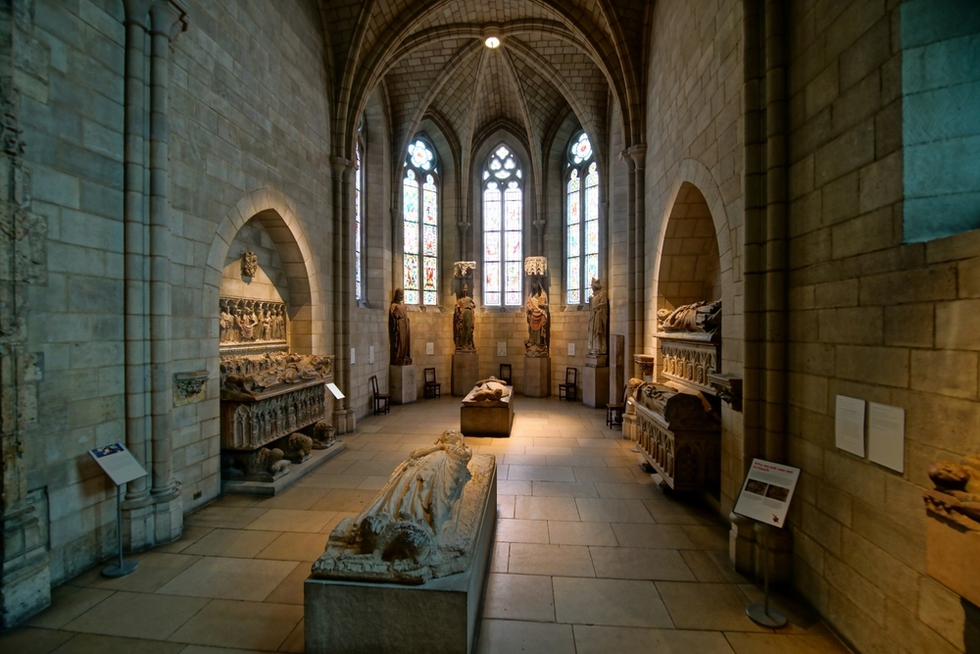An offshoot of the Metropolitan Museum, the Cloisters is the only museum in the United States devoted wholly to medieval art. And it shows its masterworks in a setting that appears to have been airlifted, utterly intact, from some remote corner of the Pyrenees, or from a castle-lined town in Bavaria.
Opened in 1934, the museum was, in fact, constructed in the United States, but 30% of the architectural elements—columns, pedestals, naves, door frames, exquisite stained-glass windows—were salvaged from medieval European structures. It’s a stunning mirage—even the land across the river was bought by patron John D. Rockefeller to thwart development and ensure that the Cloisters’ views would forever have a medieval face. At its heart are four cloisters, ancient garden areas centered with a fountain and surrounded by covered walkways of the type that appear in every monastery and abbey in Europe. Off these tranquil gardens are galleries devoted to different periods of art and architecture—a peak-ceilinged Gothic chapel here; a squat, square Romanesque-era hall there—each housing the treasures of that time period.
Though you can see the entire museum in a bit over an hour, pay special attention to the Unicorn Tapestries, one of only two full sets with a unicorn theme in the world (the other’s in Paris). These richly detailed tapestries can be enjoyed on a number of levels today, just as they were back then. Many scholars see the unicorn as a symbol of Christ, and the hunt to slay it as evocative of the Passion. Others write that the work is a metaphor for courtly love, with the hunt itself courtship, and the last tapestry of the unicorn trapped inside a wedding-ring-like fence symbolizing marriage (despite this captivity, the unicorn does look happy). Whatever you decide, they are strikingly beautiful, an evocative slice of the past.
I highly recommend timing your tour to coincide with one of the curator-led gallery talks or garden walks (usually held midday).






 About our rating system
About our rating system


